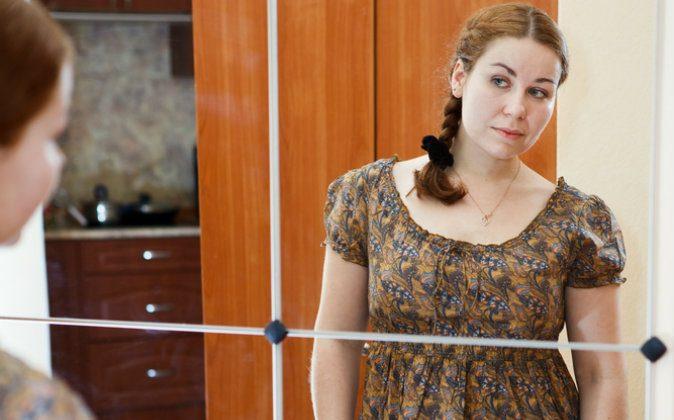As your children’s bedtime approaches, you may find yourself praying they will fall asleep easily. Often you have to spend an hour going back and forth to their room as they complain of thirst, hunger, or something else preventing them from falling asleep.
Getting your children to sleep well each night requires good sleep-hygiene habits. According to sleep specialist Tom Jackson, M.D., in a press release, sleep hygiene simply refers to the set of habits and guidelines that promote sufficient sleep for an energized and alert day.
In order to keep our body in balance, we need routine bedtimes and wake-up times.
Dr. Jackson, the creator of DreamChild Adventures audio programs, says there are four pillars of getting a good night’s rest. They are setting a sleep schedule, a preparation routine, healthy sleep environments, and daily behaviors and habits.
Bedtime Schedule
Our bodies run according to a set rhythm called the circadian rhythm. Throughout the day, our body temperature changes, as do metabolism, hormonal shifts, and hunger cycles. These cycles are all a part of our circadian rhythm.
The circadian rhythm follows a 24-hour cycle. It is found in most living things, including animals, plants, and many tiny microbes, according to the National Institutes of Health.
The reason we feel drowsy at night is due to the body reacting to less light, and therefore the hormone melatonin gets released and causes us to feel drowsy. However, if we continually fight our body’s natural clock, then we will get out of rhythm or balance and potentially develop a sleep disorder.
In order to keep our body in balance, we need routine bedtimes and wake-up times. It is important to follow this routine seven days a week so the body understands how to set its internal clock. This is not only important for children. It is also essential for the health of teenagers and adults.
Bedtime Routine
Help children wind down 30 to 60 minutes before bed so they can fall asleep with ease. Children love to play, and if they are playing up until the point of conk-out time, then they will have some anxiety around letting go of all the fun as they begin to feel tired.
The same guideline applies to video games, TV, and even reading. We need to let our minds become quiet so we can have a deep and restful sleep. If we stimulate our minds until the point of exhaustion, then our sleep will not be as sound.
Offer children a five-minute warning before they have to stop doing what they are doing and get ready for bed. After that five-minute mark, have children put away their toys, wash up—a relaxing bath is always nice—and get into their pajamas.
To help them calm down even more, you may spend some quiet time with them, brushing their hair, chatting, or reading. Creating a quiet home environment at night will not only be good for the children, but also healthy for the adults in the household.
You may want to put on some tranquil music or turn off the music and TV altogether. Sometimes teaching children how to breathe deeply, stretch, or even meditate is a great way to get them used to handling stress well and learning how to decompress.
Dr. Jackson suggests going for a stroll, playing a quiet game, such as a card game, or completing a puzzle with an older child. As children get older, help them choose an independent activity to partake in before bed. This may include listening to calming music or reading poetry.
Sleep Environment
Our sleep environment is a very important factor that contributes to mastering healthy sleep habits. If the bedroom is too cold or hot, dusty and messy, or loud and stuffy, then sleeping restfully through the night will be impossible.
Just as we want our minds to be quiet and clean before we lie down to sleep, we want our home environment to reflect that. Tidy up a bit before bed so that the bedroom is not cluttered or dusty.
If you hadn’t done so already, shake the sheets and blankets out and make the bed so that you feel comfortable throughout the night and won’t get woken or distracted by twisted sheets and blankets.
The room temperature should remain consistent. Ideally, you want fresh, cool air. If it gets too hot, children may wake up in the middle of the night. Be sure to shut off the TV and music before bed. The environment should be as quiet as possible, and the room should be as dark as possible to allow hormonal shifts to take place.
Daytime Habits Can Help
Just as the bedroom should be dark at night, you should expose children to the sunlight as soon as possible in the morning. This will help children’s body wisdom to know it is time to be alert and awake.
If children are dealing with unresolved stress during the day, such as bullying or trouble with schoolwork, then sleeping at night may prove to be difficult. If you’ve stuck to a regular schedule and routine and created a healthy room environment, then you may want to ask the children if anything is bothering them.
Children have a lot of energy. Rather then allowing them to burn it off in front of the TV or playing video games, be sure that the children are getting enough physical activity during the day. Watching too much TV and playing video games can stimulate the mind and prevent a calm and peaceful slumber.
Finally, be mindful of children’s health. Too much sugar, processed food, or too many foods they may be allergic to will not sit well in the body, often causing indigestion and preventing a restful sleep.
If your children are on medication, discuss with their pediatrician any possible side effects that will interfere with sleep and see what alternatives you may be able to offer them.
Tysan Lerner is the founder of Lavender Mamas, a wellness-coaching program for mothers who want to get their body and health back in tip-top shape. She is a certified personal trainer through NYU and a certified Holistic Health Coach through the Institute of Integrative Nutrition. Her website is www.lavendermamas.com






Friends Read Free